Article continues below
At 19:30, the ferry left Tingwall Jetty with little indication it was sailing to a place where time stopped long ago. Ahead, on the cusp of the horizon, a whaleback island rose up, caught between surging tides and the setting sun. A little-known, uninhabited isle in the Orkney archipelago, just north of Scotland’s mainland, this was Eynhallow: a place of pilgrimage and ritual, folklore and ghosts.
If Scotland had an Atlantis, Eynhallow would be it.
As the island drew near, the boat continued its westward chug, passing farmsteads, pastures and peaty fields. The passengers chatted excitedly. An American family, feverish and camera-ready at the prow, even had crossed an ocean to be here.
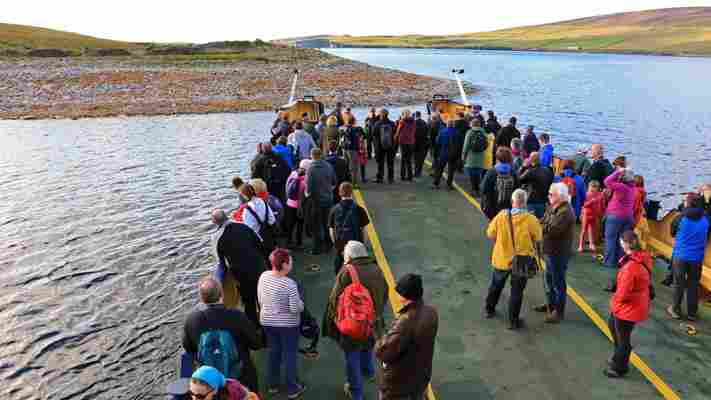
Passengers on the ferry wait as it pulls into Eynhallow (Credit: Mike MacEacheran)
Eynhallow remains inaccessible for 364 days a year – but is tantalisingly within reach, just 500m from the Mainland, the isle where we began our journey. With no ferry to the island, the trip organised by the Orkney Heritage Society each summer is the only chance to step foot on the island. Even if you did have your own boat, the tidal channels – which run like galloping rivers on either side of Eynhallow – make crossing and landing risky.
You might also like: – This remote Scottish island is coming back to life – The most sophisticated people you never knew – Were these wild islands the centre of everything?
“I see it every day,” said Bob Nelson, a retired farmer who watches the island from his house across the water. “And yet I don’t understand it at all.”
Now, the boat made landfall and the scramble to shore began.
Comparisons with Plato’s legendary island may be far-fetched, but they are apt. If you consult a large-scale map of the Orkney Islands, you’d struggle to place Eynhallow. Squashed beneath the larger islands of Mainland and Rousay and measuring no more than a half mile (900m) across, the heart-shaped isle barely gets a speck of ink on an atlas. It lies low, reaching only 40m at its highest point, and is characterised by little more than heaps of leather-like seaweed and storm beaches made of weather-beaten stones. It has the same colours and contours of thousands of other Scottish skerries. But unlike them, everything here is paused, almost at a standstill.
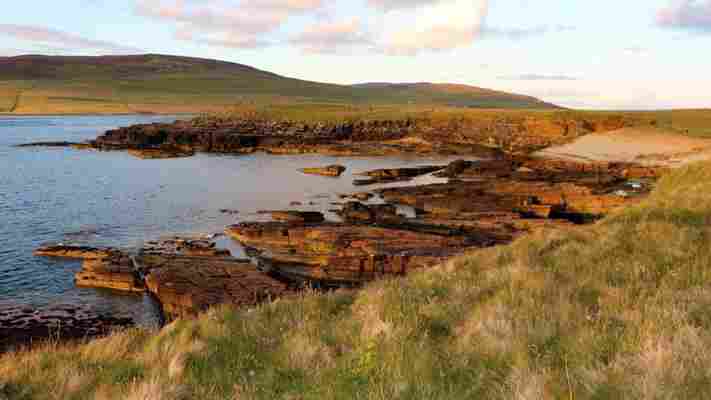
Seaweed, storm beaches and the sense of time standing still characterise Eynhallow (Credit: Mike MacEacheran)
Like Atlantis, Eynhallow has its fair share of mysteries. Orcadians grew up listening to stories about the haunted island. According to legend it was under the spell of mythical sea trows – evil Norse spirits who would make the island vanish into thin air should anyone attempt to set foot on it. Others were told more fantastical stories about the finfolk, or mer-people: watery shape shifters who only came on land in summer.
This oral history has helped make the island an enigma. References to Eynhallow throughout time are spurious and its precise beginnings are difficult to identify. In the Orkneyinga saga, the historical narrative written in the 13th Century about the Orkney Islands, Eynhallow is only passingly mentioned. But while many of the archipelago’s other islands have a beginning, Eynhallow’s true origins have almost completely disappeared.
“Locals say the island exists between worlds – both geographically and historically – and there’s plenty of truth in that,” said Dan Lee, an archaeologist from the University of the Highlands and Islands. “A plague hit in 1851, causing the families that lived here to flee. Then to disinfect the land and make sure no one would return, the Laird dismantled all the roofs of the houses. And it’s been uninhabited ever since.”
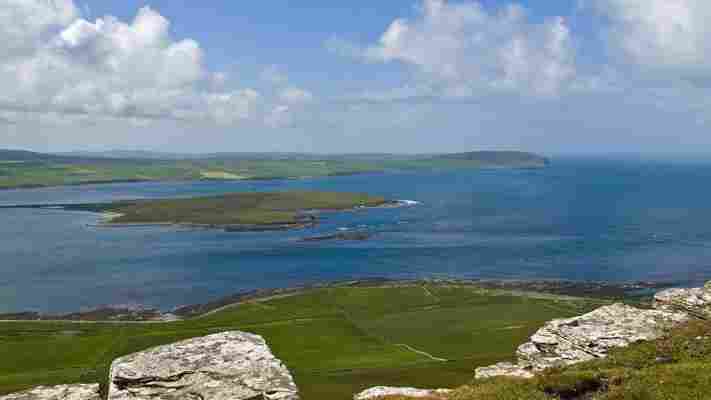
Located between the larger islands of Mainland and Rousay, Eynhallow measures no more than a half mile (900m) across (Credit: Alamy)
We crossed an overgrown field of flourishing thistles and wildflowers before stopping at the ruins of an ancient stone monastery. Here, Lee explained, archaeologists had found echoes of a refectory, cloisters and bell tower, as well the rounded archway of a nave. Beside the chancel walls, there were traces of medieval land use patterns in the dykes, ridges and furrows – all pointing to a much older history. Prehistoric sites had been found, as had burial mounds and Stone Age walls. All of it was a map to an undiscovered world.
In the ancient stone monastery, archaeologists found evidence of a refectory, cloisters and bell tower (Credit: Mike MacEacheran)
“Eynhallow translates as the Holy Isle, or ‘Eyin Helga’ in Old Norse, but the importance of this was something the island residents never fully understood,” said Dr Sarah Jane Gibbon, another archaeologist from the University of the Highlands and Islands. “Orkney is the only place in Western Europe without a confirmed monastery, yet everything points to it being on Eynhallow. And this one could date back to the 11th Century.”
Such a wealth of archaeological mystery would normally be rewarded with research grants. But with so much competition for resources in archaeology-rich Orkney, Eyhallow’s riddles never have been fully scrutinised.
The ruined monastery on Eynhallow may have been the main monastery for all of Orkney (Credit: Mike MacEacheran)
For environmentalists, at least, that is a blessing. Ever since the island’s 19th-Century evacuation, Eynhallow has been recast as an important breeding ground for seabirds, the cliffs now pockmarked with nesting sites for puffins, arctic terns and gulls. Bobbins can be spotted catching the breeze, while a rare colony of tube-nosed fulmars roost above the shoreline. In this place encircled by water and besieged by tides, life has found a way to prosper. And it feels like a remarkable reunion.
Evening approaches Eynhallow (Credit: Mike MacEacheran)
On return to the ferry, the birdsong now only a murmur, the archaeologists shared fragments of tales from their evening’s adventure. One by one, as the boat crossed back to Tingwall, they pieced together an alternative history, shouldering a responsibility to carry Eynhallow’s story forward. Then, as if by serendipity, the island became silhouetted against the fiery red sky, silent and once more lost amid the beautiful complexity of the Orkney Isles.
This story is a part of BBC Britain – a series focused on exploring this extraordinary island, one story at a time. Readers outside of the UK can see every BBC Britain story by heading to the Britain homepage ; you also can see our latest stories by following us on Facebook and Twitter .
If you liked this story, sign up for the weekly bbc.com features newsletter , called “If You Only Read 6 Things This Week ”. A handpicked selection of stories from BBC Future, Earth, Culture, Capital, Travel and Autos, delivered to your inbox every Friday.

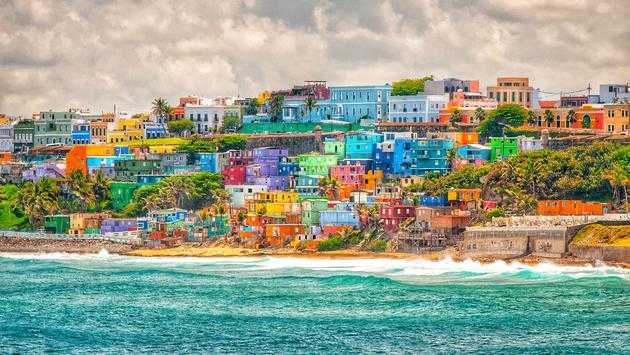

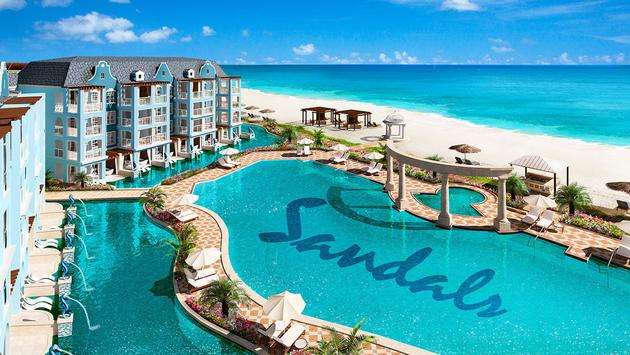
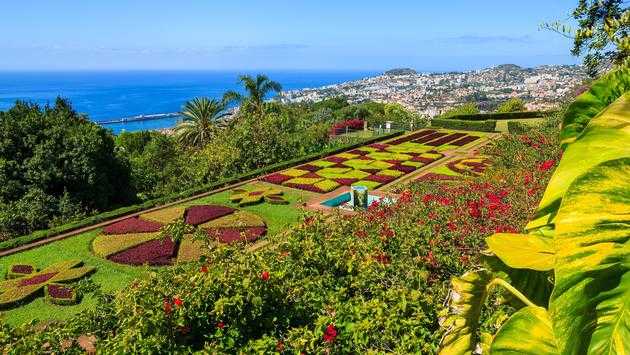

Leave a Comment